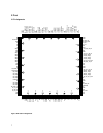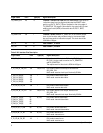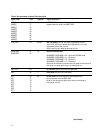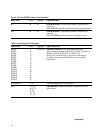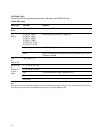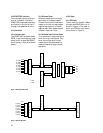
14
Signal name Pin # Type(I/O) Signal description
SCL 92 I/O EEPROM bus clock. If no EEPROM is present, connect this pin
to ground.
Refer to EEPROM application notes for board pull-up requirements.
SDA 89 I/O EEPROM bus data. If no EEPROM is present, connect this pin
to ground.
Refer to EEPROM app notes for board pull-up requirements.
Table 6. Two-Wire EEPROM Interface Pins Description
Signal name Pin # Type(I/O) Signal description
GPIO[0] 9 I/O (int. PU) GENERAL PURPOSE I/O: The GPIO register allows the
GPIO[1] 12 user to define each grouping (GPIO [0, 1], GPIO [2, 3], GPIO [4, 5],
GPIO[2] 13 GPIO[6, 7], GPIO [8, 9], GPIO [10, 11], GPIO [12, 13],
GPIO[3] 14 GPIO [14, 15] ) as either input or output bits. These bits can
GPIO[4] 15 be used for functions such as LED control or user-defined
GPIO[5] 16 input control.
GPIO[6] 17
GPIO[7] 18
GPIO[8] 43
GPIO[9] 44
GPIO[10] 45
GPIO[11] 46
GPIO[12] 47
GPIO[13] 48
GPIO[14] 49
GPIO[15] 52
NO CONNECT 3, 148 These pins should be left unconnected.
GND 1, 21, 31, Logic GROUND: These pins should be connected to the logic
41,61, 71, ground plane.
81, 101,
111, 121,
141, 151
Table 7. Miscellaneous Pins Description
(continues)




